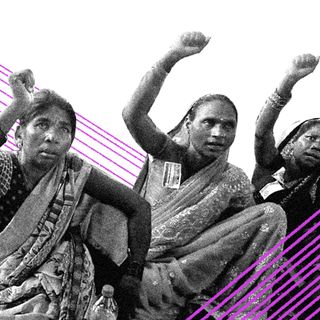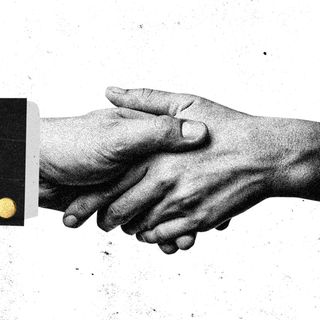
Indian Women Hold Only 10% of Directing, Writing Positions in Films and TV: Report
The lack of women in industry positions eventually translates into a lack of representation on screen.

Indian cinema adheres to an unwavering principle: movies, theatrical productions, and television are constructed and designed from a male point of view. As a truth that dominates and dictates our sensibilities, this gender exclusion has an impact on the on-and-off screen representation of women in the industry. In 2021, Indian women hold almost 10% of industry positions — such as editing, directing, writing, design, and cinematography — in films and series streamed online. On-screen, this means women’s stories are disembodied, told by people holding structural privilege, and told in a way that objectifies and stereotypes lived realities.
The representation of women across films and streaming shows was the subject of a recent report by O Womaniya! The trail of examination included almost 150 films released in theatres, along with films and TV series released on streaming platforms, in 2021 across eight languages. These include Hindi, Tamil, Telugu, Malayalam, Kannada, Punjabi, Bengali, and Gujarati.
One key figure that strikes out: out of the 56 theatrical films surveyed in 2021, none of them had a woman as the director or editor. This corresponds with a larger cultural myth and distrust around women in fast-paced environments; reductive beliefs like “women can’t handle the pressure” or aren’t “cut out” for the gritty world of moviemaking prevent access and mobility in a male-dominated industry. The lens is directed by a familiarity bias; since the majority of directors and industry professionals are male, they are more likely to hire other male professionals because “people tend to recruit in their own image,” according to Dame Heather Rabbatts, Chair of Time’s Up UK, a group which was founded in 2018 by some of Hollywood’s most high-profile actresses fighting against #MeToo.
These arguments then bolster other misplaced ideas, that there is no representation due to a lack of female talent. There are no women directors because we have no talented women. There’s no modicum of truth here; it’s the same tenuous reasoning that prevents women from navigating fields like science and technology. The lack of representation does shape the freedom with which women aspire though.
Since “[directing] has not been a role where women have seen many other women role models,” Rabbatts notes, it is a long and arduous journey for women to be able to lay claim to directing, as something that doesn’t belong to the male talent alone. This is a world where aspirations are censored too; from dictating one’s agency to imagine to creating structural barriers limiting those creations, women are kept out of the chairs of authority and leadership almost by conspiracy.
Related on The Swaddle:
Women Outnumbered Men in Only 7% of Hollywood Movies Last Year: Study
It is no secret that the lack of women in industry positions eventually translates into a lack of representation on screen. The representation is both in terms of the character, the stories they represent, and the agency they have to talk, interact, and make their way through fictional plots.
The current report estimates that in the promotional trailers released in 2021, women had only 25% of talking time. The researchers even conducted the Bechdel Test, a measure of gender representation governed by three rules: that there must be at least two characters who are women, who talk to each other, about something other than a man. Out of the web series and films surveyed, only 55% passed the test.
The findings aren’t that significantly different from that of another comprehensive study conducted back in 2014. The Geena Davis Institute on Gender in Media found that out of all Indian films, female characters comprised only 24.9% in total — more jarringly, there were no female leads or co-leads in the top 10 highest-grossing movies of 2014.
“When women do appear in films, they are rarely shown in powerful positions. Fewer than 15% of all roles in Indian films depict women as business executives, political figures, or science, technology, engineering, and math professionals. Instead, female characters are commonly presented in gendered occupations such as nurses and teachers, and as wives and mothers.”
The link between on-screen and off-screen representation shares a causational representation too. As Rabbatts mentioned, one reason could be the idea of aspiration and constructing “role models” that are accessible and familiar. Who you see is also who you would want to be, which makes it important for women to be seen in the first place.
Moreover, an increase in women’s representation in industry positions visibly translates into more women taking cinematic roles and even higher talking time. If a woman helms a series or film project, according to the current report, the proportion of women who would then be an editor, director, or other senior figures almost doubled. Similarly, the said movie was also more likely to have women talking more, and a higher proportion of movies (68%) passed the Bechdel Test too.
This trend aligns with other movie industries too; in Hollywood, movies with a female director “employed greater percentages of women writers, editors, cinematographers, and composers than films with exclusively male directors, according to research from the Center for the Study of Women in Television and Film. “I always start filling up slots with women and people of color first, then if anything’s left, we will look elsewhere… So instead of unconsciously ignoring women or people of color, I’m consciously hiring them,” actor Eva Longoria told The Guardian.
This further creates a feedback loop. If more off-screen representation can lead to on-screen representation of women, who then tell stories stemming from their experiences and in their voices, stories are bound to be more progressive and meaningful. Filmmaker Amy Adrion remembers the objections by hefty names while producing Half the Picture, a documentary calling out sexism in the entertainment industry (this was before MeToo revealed the macabre truths of the film industry). “I would explain what I was doing, and I would have people in the business saying, ‘Is this really a problem now? Are women just too sensitive?’” she said in an interview. “They just didn’t really believe that this kind of systemic discrimination exists.”
There is research to substantiate that progressive depictions in movies and series can then have a significant impact in the real world. According to the 2014 study too, the participants noted that “watching” women in professional roles cast a positive light on female education in the country. “I like movies like ‘Mardaani’ with Rani Mukerji and ‘Mary Kom’ with Priyanka Chopra. They teach girls to be strong and always face the challenges in life,” said one of the participants.
Our stories change when the people behind and within them change too.
Saumya Kalia is an Associate Editor at The Swaddle. Her journalism and writing explore issues of social justice, digital sub-cultures, media ecosystem, literature, and memory as they cut across socio-cultural periods. You can reach her at @Saumya_Kalia.
Related


If Promise to Marry Was Made in ‘Good Faith’ Before a Couple Had Sex, Not Fulfilling the Promise Isn’t Rape: SC
